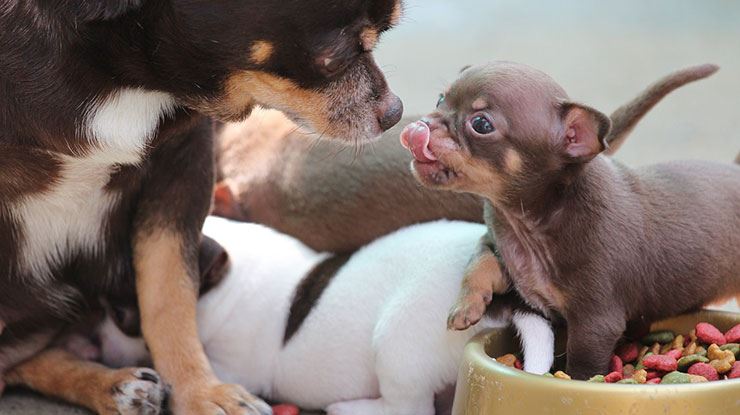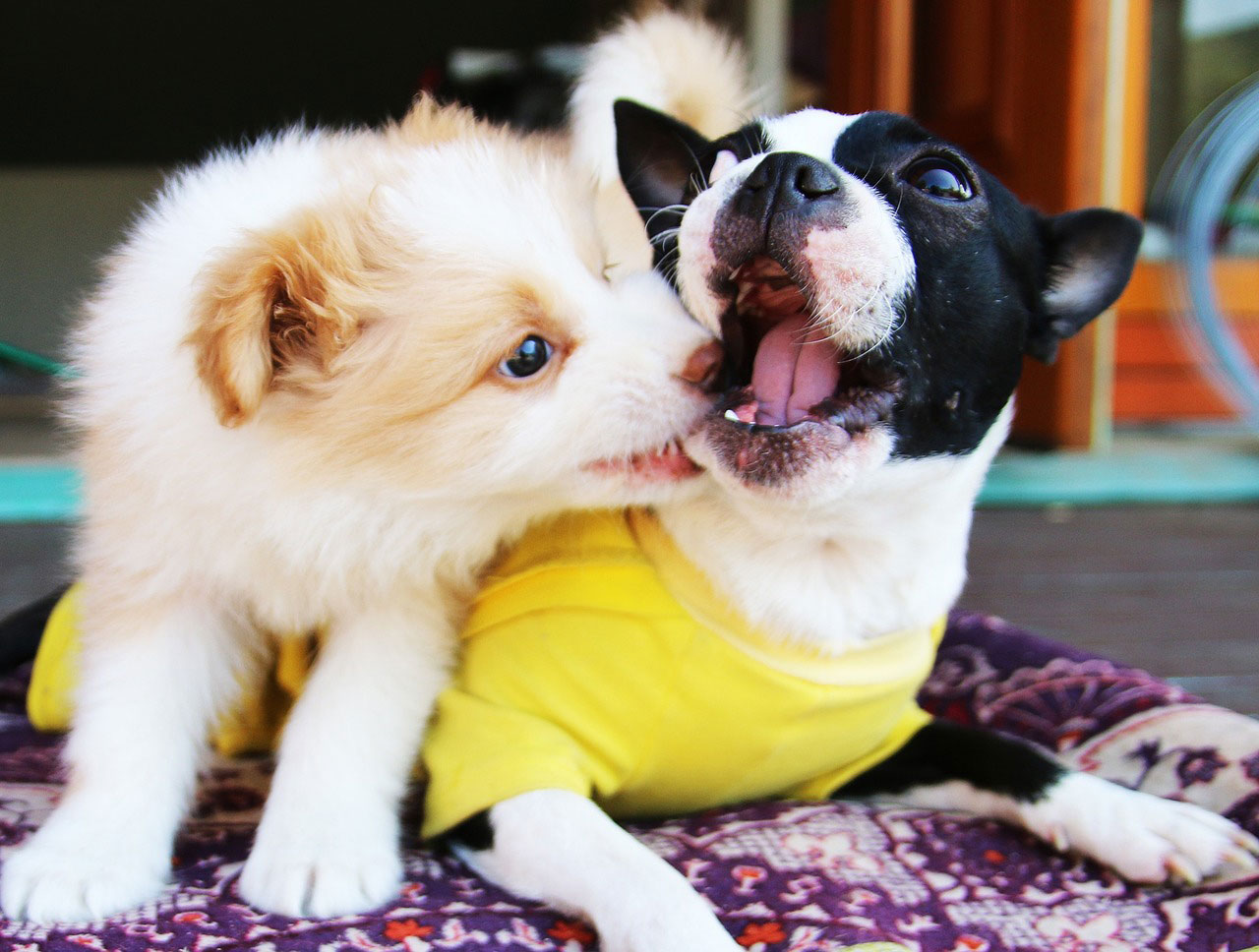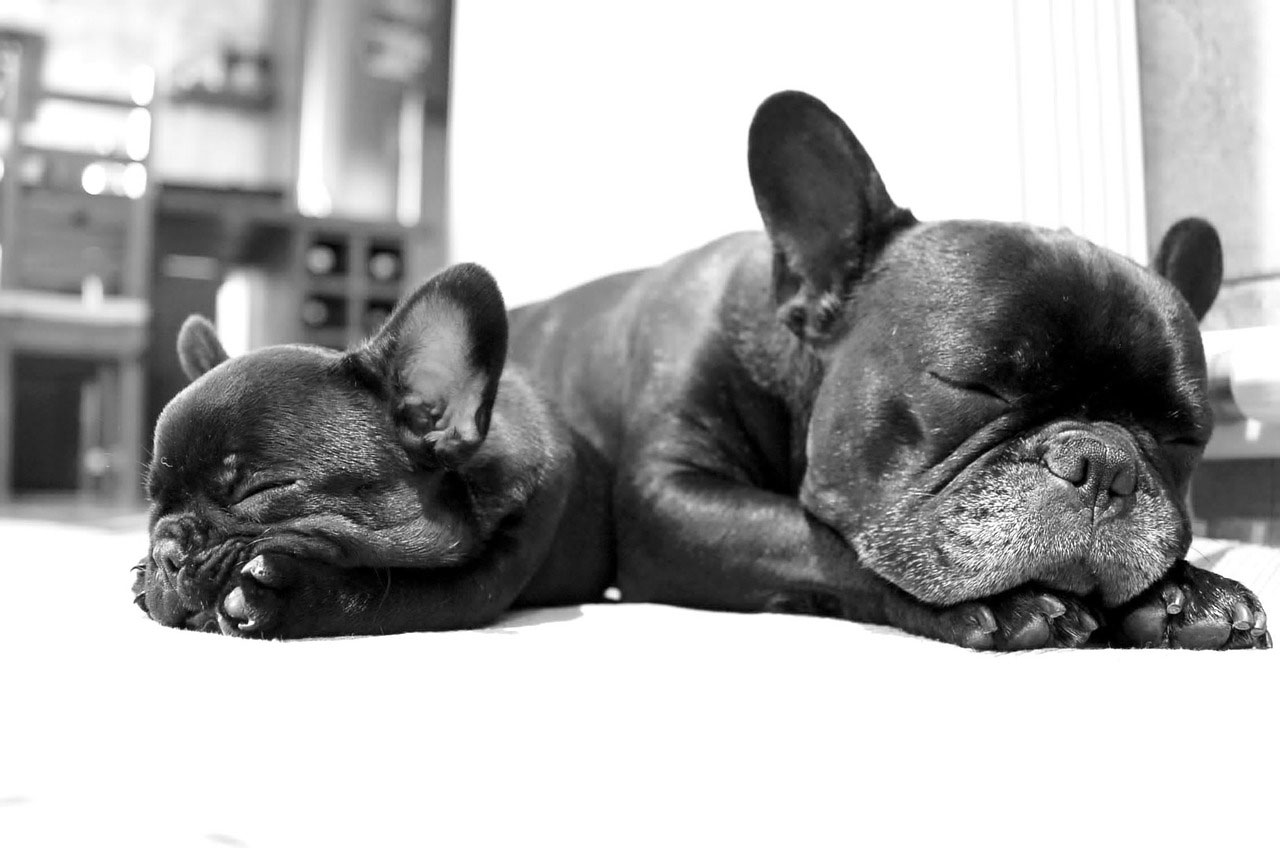
How to Introduce a New Puppy into Your Home
If you’re thinking about bringing a puppy home, there are a few preparations you need to make before doing so. If you have other animals or dogs, you’ll especially want to make sure that your introductions go as smoothly as possible. You want all of your animals to feel safe, and you’ll want to make sure that they quickly learn what kind of behavior is acceptable in their new home. Here are some tips so that you can make this transition as easy as possible on you and your other animals:
Prepare Ahead of Time
Get your dog or other animals used to dogs. If you already have a dog, try to socialize him as much as possible. Try things like the dog park and just taking your dog on regular walks. Making sure that the dog is exposed to other people and other dogs is a must if he’s going to be welcoming a new brother or sister into the home. A training class is also a great idea if you’re not sure how your resident dog might react to another dog in his space.
Prepare a safe space for when you move the dog into her new home. This goes for all of your animals. There should be a space ready for your animals and for your new companion. Make sure they have a few things they really like in that space. It might be a crate with their favorite blankets and toys or possibly their favorite sleeping spot in a bedroom. Whatever the case may be, make sure they are used to the space and that they respond positively to it. They’re already going to be shocked when a new member of the family comes home, so it’s nice to remind them that they still have some areas of comfort they can turn to if they’re feeling overwhelmed.
Lastly, get everything you need for your puppy before you ever bring her home. Make sure she has aa comfortable place to sleep, toys, training treats, potty pads, a collar and leash, food, bowls, and anything else you think she will need in order to settle right in. The last thing you want is to be scrambling with a new pup on your hands. You should aim to bring her in the home and allow her as much time as she needs to become acquainted with the space and other animals with little distractions. So, preparing their things ahead of time is essential.

Start Small With Introductions
If you feel your dog might be overwhelmed, think about doing short play sessions to start. It’s also not a bad idea to try to bring a puppy into a place where your dog already feels comfortable and confident—not aggressive. For example, your dog might not be keen on the idea of a new puppy with no boundaries going near his food, so try to start somewhere else.
If you have a backyard or a safe lawn area, that is a great open area to start. It’s likely that your other dog or animals won’t feel territorial about a space like that. Introduce new items that they can both play with together in a fun way. Some dogs can get possessive over their toys and other items. So, bringing in completely new items (and taking away items that they might feel possessive over) can eliminate conflict possibilities.
Make sure you listen to your dog’s body language once you introduce your animals. Think about his posture when he’s around you and the new puppy. He may begin to bark or stand in a way that you haven’t seen before. He’ll likely look to you often for approval as he starts to explore different ways of expressing himself. So, be aware of this and make sure that your own voice and body language show that you’re comfortable with them being together. Use your body and voice as a way to connect both of them so that no one feels left out.
Get Ready to Show Them the Ropes
Puppies don’t really have any boundaries when it comes to your home, not just as it relates to any other animals that you have, but also your belongings and house itself. You’ll have to be ready to show your new puppy what is acceptable behavior in your home and what is not.
For example, potty training is usually something you have to consistently work on in order for it to sink in. Make sure that you’re ready to take your puppy out every half hour when you first bring her home. If you can give her a small treat when she uses the bathroom outside, that also helps.
Again, if you also have toys ready for her to play with, you’ll be able to curb some destructive behaviors. If you find your puppy chewing on something she shouldn’t, simply redirect her behavior with a toy. By telling her “no” for that item, but then giving her a toy that is acceptable, she’ll eventually learn what kind of things are meant for playing.

Bringing home a new puppy is such an exciting time, but it can be stressful if you’re not sure how they’ll interact with your home and other pets. As long as you can make sure that everyone in the house feels safe and has what they need to be comfortable, things should go smoothly. The longer that you have to prepare another dog or other animals for a new addition to the home, the better. It will mean less stress for you and your animals as well as less possibility for territorial or aggressive behavior to develop.










